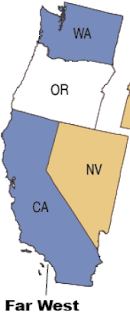Public funding plays an important role in children's health insurance coverage in the United States. Data from the National Health Interview Survey (2019) indicates that around 41% of American children under the age of 18 have health insurance coverage that depends on public funding. While health benefit programs for government personnel, including the military, account for some of the child enrollment in publicly funded health insurance plans, it is Medicaid and the Children's Health Insurance Program (CHIP) that are the two chief drivers of publicly funded health insurance coverage for children in the United States. Federal reports indicate that, as of September 2020, there were 37.4 million individuals who were either enrolled in CHIP or who were children enrolled in the Medicaid program. Medicaid, the joint state-federal health insurance program for eligible individuals with limited income and resources, provides insurance coverage for more than 30 million American children. Another 6.7 million individuals are enrolled in CHIP plans. CHIP is a related joint state-federal effort to make health insurance coverage available to children from families with low incomes, but not low enough to qualify for standard Medicaid coverage.
As of September 2020, the six-state Far West region accounted for 23.4% of the national enrollment in CHIP and 17.0% of U.S. children enrolled in the Medicaid program. Here is a summary look at CHIP and Medicaid Child enrollment in the Far West region of the United States:
 |
| CHIP and Medicaid Child Enrollment in the Far West |
| State | (1) CHIP | (2) Medicaid Child | Total |
| AK | 13.7 | 85.1 | 98.8 |
| CA | 1,288.4 | 3,632.8 | 4,921.2 |
| HI | 25.4 | 124.4 | 149.8 |
| NV | 38.2 | 286.1 | 324.3 |
| OR | 133.8 | 304.1 | 437.9 |
| WA | 70.3 | 778.3 | 848.6 |
| Region | 1,569.8 | 5,210.8 | 6,780.6 |
| U.S. | 6,719.1 | 30,641.9 | 37,361.0 |
Source: Medicaid.gov Enrollment Reports as of September, 2020